
Gothic - the mystical art of the Middle Ages
Gothic painting emerged as a successor to the Romanesque style. The term "Gothic" was coined by the Italian artist and art historian Giorgio Vasari to define the period between the Middle Ages and the Renaissance. The driving force behind the creativity of architects and painters during the Gothic period was the Christian worldview, permeating all spheres of life in that era. The Gothic style evolved in all forms of art under the strong influence of the church.
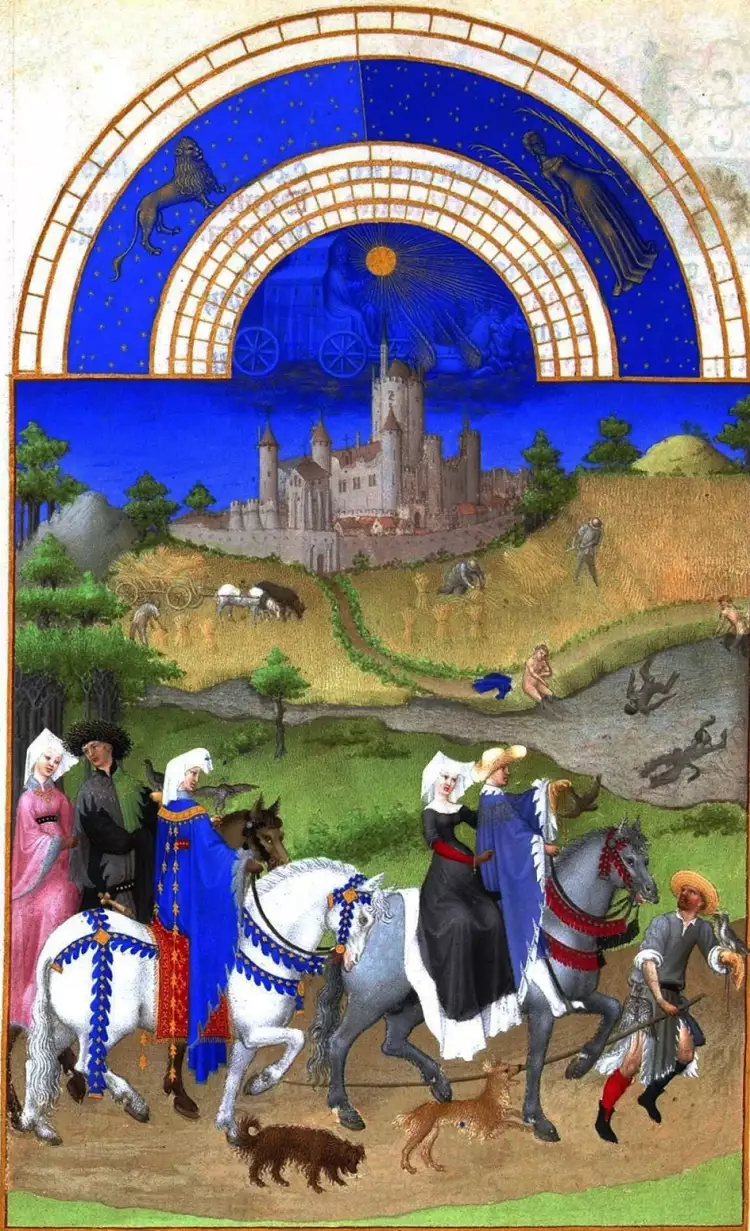 Gothic. Limbourg brothers. The Very Rich Hours of the Duke of Berry, 1415
Gothic. Limbourg brothers. The Very Rich Hours of the Duke of Berry, 1415
Gothic originated in France, and the birth date of the Gothic style is commonly considered to be July 14, 1140. It was then that the renovation of the church in the Benedictine abbey of Saint-Denis, serving as the burial place for kings during the Merovingian era, began. During the reconstruction of the monastery, characteristic elements of Gothic architecture were first implemented – ribbed vaults, which later became a distinctive feature of all buildings constructed in this style.
Gothic painting emerged a few decades later than in architecture. The direction developed against the backdrop of political instability, which was characteristic of Europe in the early Middle Ages. Changes also occurred in the Catholic Church – a large part of heretical sects was eradicated, simultaneously increasing the influence of mendicant monastic orders, urging parishioners to brotherly love and asceticism.
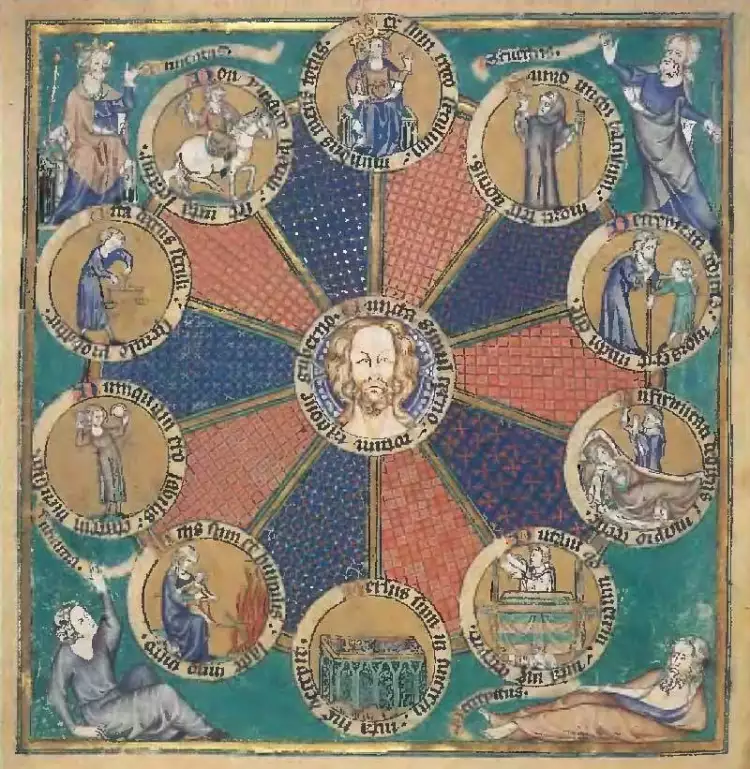 Gothic. Psalter by Robert de Lisle. The wheel of the 10 ages of man, 1339
Gothic. Psalter by Robert de Lisle. The wheel of the 10 ages of man, 1339
Under the influence of historical changes, perceptions of painting transformed, new techniques and plots emerged. The early Gothic period was marked by the emergence of a fundamentally different approach to depicting the crucifixion of Christ. Paintings conveyed the pain of the Savior, the sorrow of the Virgin Mary, and the witnesses' attitude to the crucifixion. The painted scenes were characterized by naturalism, which was previously uncharacteristic of artists' work.
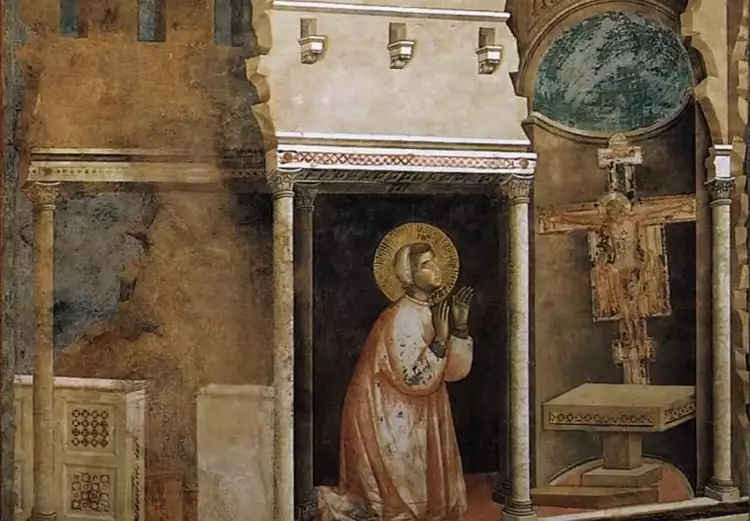 Gothic. Giotto di Bondone. St Francis having a conversation with the crucifixion, 1295
Gothic. Giotto di Bondone. St Francis having a conversation with the crucifixion, 1295
The Emergence of Gothic
One of the prominent examples of early Gothic art was the Book of Hours. The pages of prayer books were adorned with exquisite miniatures that could be examined for hours. By the end of the 13th century, the art of decorating liturgical books had reached its zenith – editions were so richly adorned that they turned into objects of luxury. The trade of Books of Hours flourished at the court of Louis IX, and in Paris, numerous workshops emerged where illustrated prayer books were crafted.
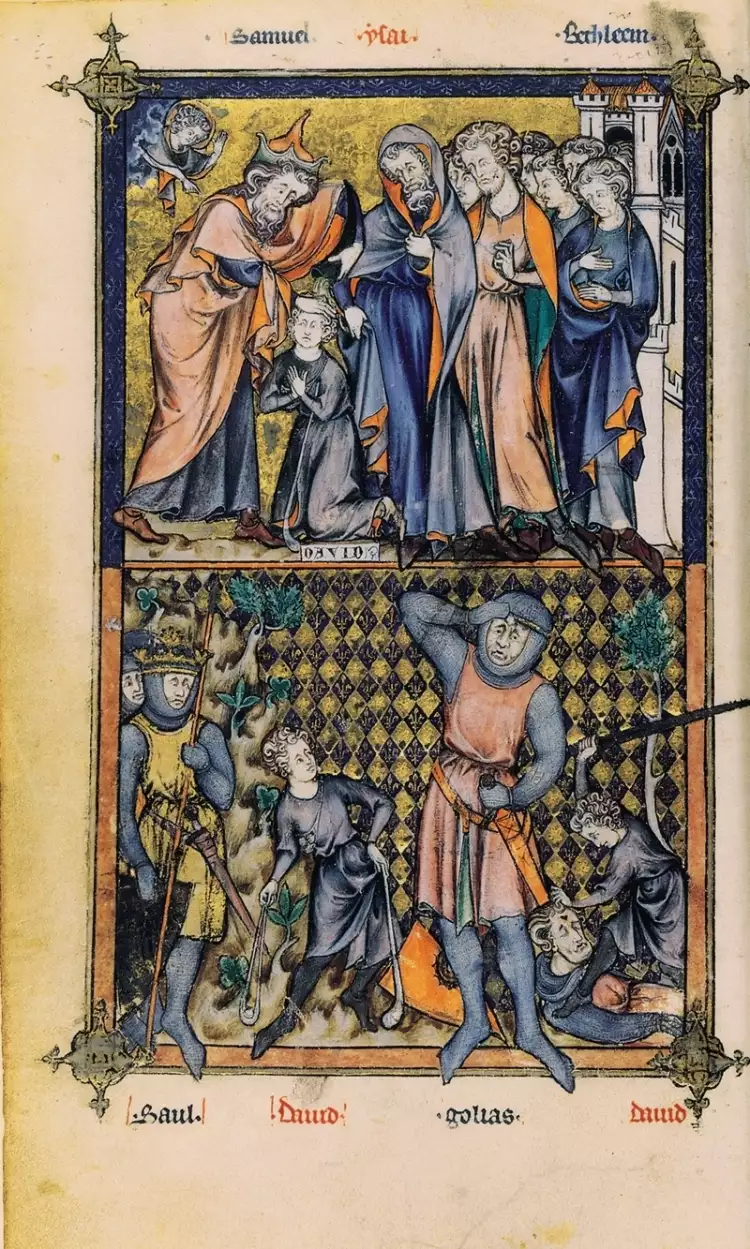 Gothic. Master Honoré. The Breviary of Philip the Beautiful, 1290
Gothic. Master Honoré. The Breviary of Philip the Beautiful, 1290
The spread of the Gothic architectural style with its intricate ornaments and large windows led to changes in the decoration of churches. Characteristic frescoes of the Romanesque period were replaced by stained glass and mosaic, and painting in the church began to play a subordinate role. New requirements for wall paintings led artists to borrow motifs from architectural elements and complement paintings with ornaments that served as a continuation of ribbed vaults.
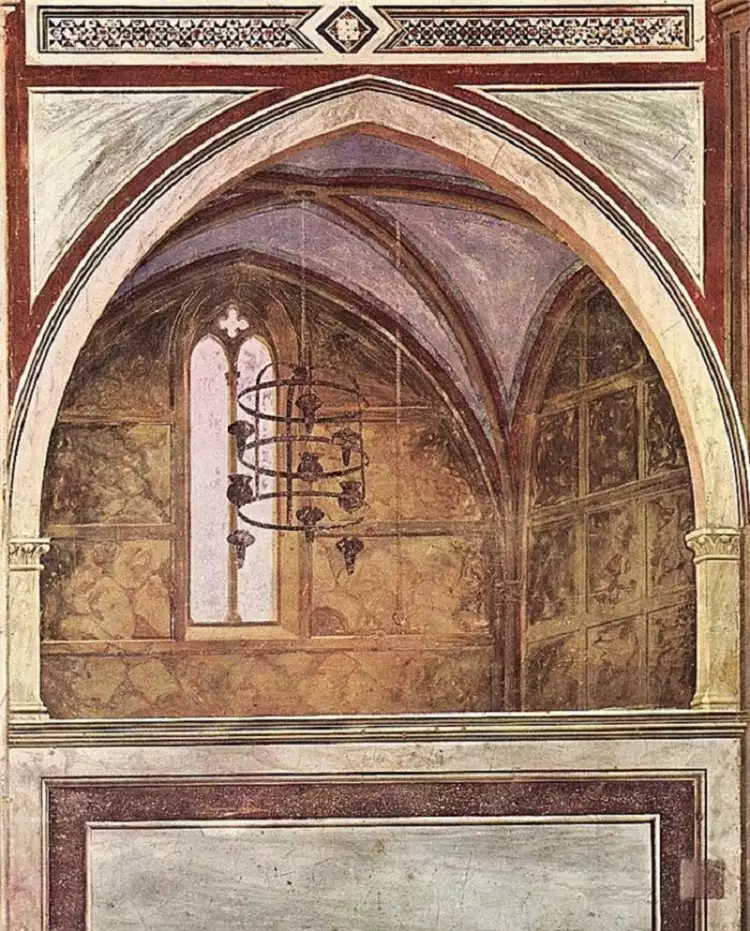 Gothic. Giotto di Bondone. Still Life, 1305
Gothic. Giotto di Bondone. Still Life, 1305
Religious themes dominated Gothic narratives, but tension in the relationship between the church and society led to the infiltration of new motifs into painting. Artists increasingly focused on elements that were previously depicted only symbolically. Scenes began to feature detailed depictions of flowers and cult objects. Giotto adorned the niche of a church in Padua with intricately detailed candlesticks, and his pupil Taddeo Gaddi centered the composition around a set for worship, including a chalice for holy gifts and bottles. The frescoes of Italian masters can be considered the first still lifes in European art.
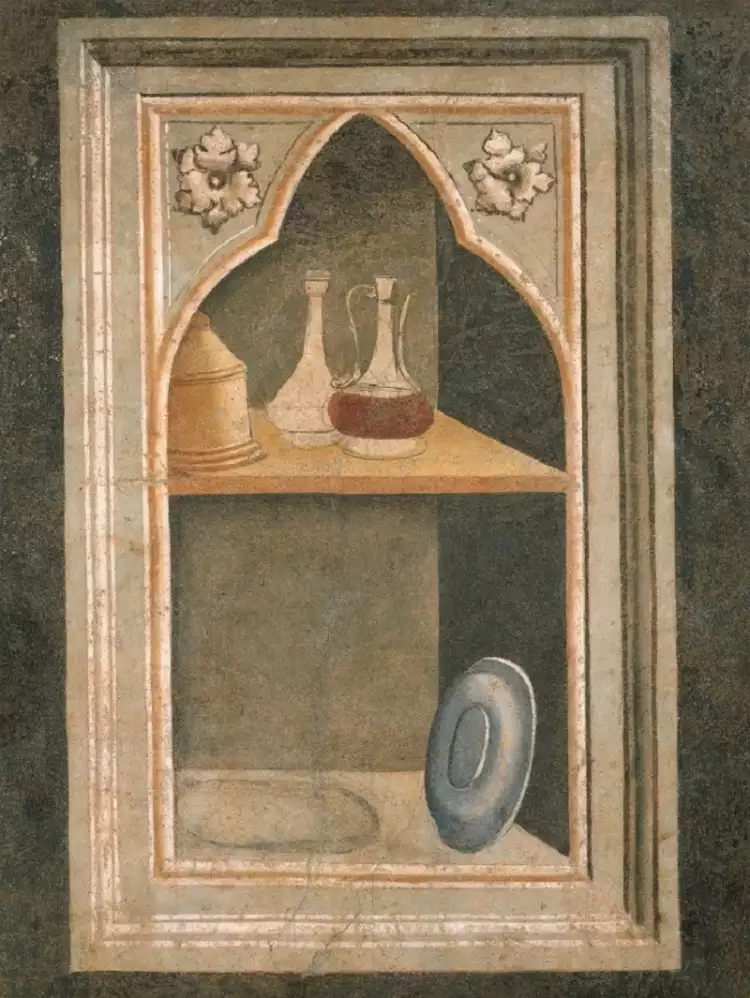 Gothic. Taddeo Gaddi. Fragment of a fresco, 1337-1338
Gothic. Taddeo Gaddi. Fragment of a fresco, 1337-1338
The Development of Gothic in Visual Arts
The development of medieval painting was significantly influenced by the philosophical views of Thomas Aquinas. In his treatises, the theologian called on artists to move away from symbolism and expressed the idea that a work of art should reflect the material world.
The call for realism was reflected in church painting – the composition remained unchanged, but the characters in the paintings gained individuality. Faces became recognizable, gestures natural, and backgrounds gradually transformed into an aesthetic object that touched the viewer's senses. In enclosed spaces where the action unfolded, windows appeared, displaying meticulously detailed views of the surroundings.
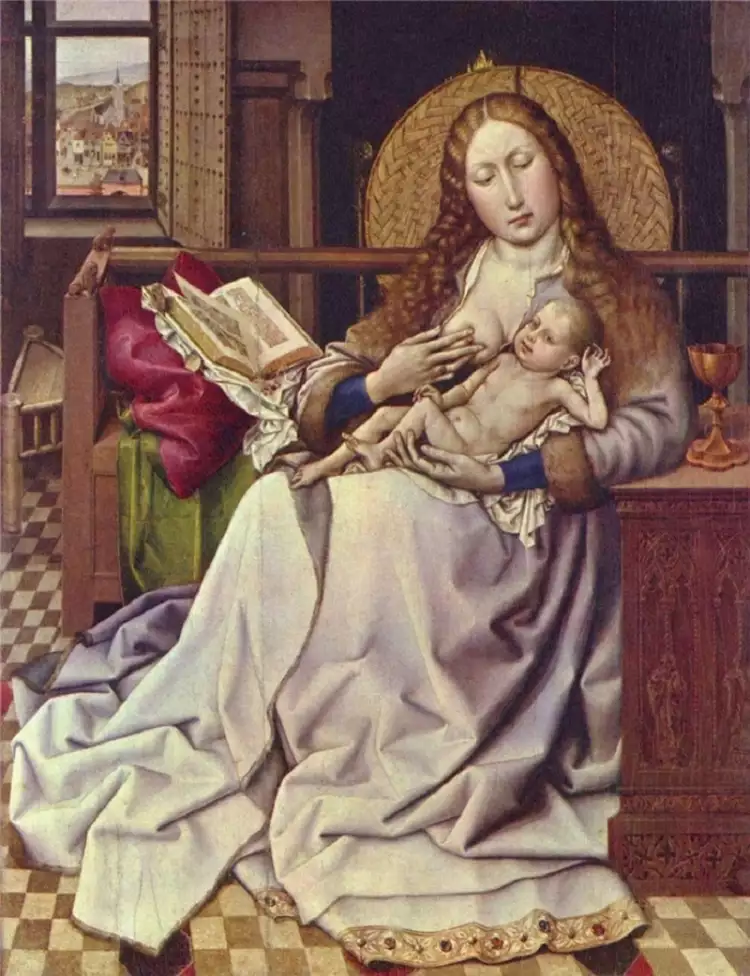 Gothic. Robert Campin. Part of a diptych. Trinity. Madonna and Child by the fireplace, 1425
Gothic. Robert Campin. Part of a diptych. Trinity. Madonna and Child by the fireplace, 1425
The characters of Christian narratives acquired emotional depth. The Mother of God with the infant began to be depicted in the center of everyday scenes, surrounded by household items, animals, and plants, allowing the viewer to establish a personal connection with the painting. The appearance of the Madonna also underwent changes – her features hinted at those of real women who lived in that era.
The role of architecture increased – buildings and interiors became full-fledged participants in the action. Changes in artists' perception of the world found reflection in the works of the Flemish master Jan van Eyck. In the scene of the "Annunciation" on one of the panels of the Ghent Altarpiece, an angel and the Virgin Mary are depicted in a room, where the details of the interior are so meticulously and voluminously rendered that they appear real.
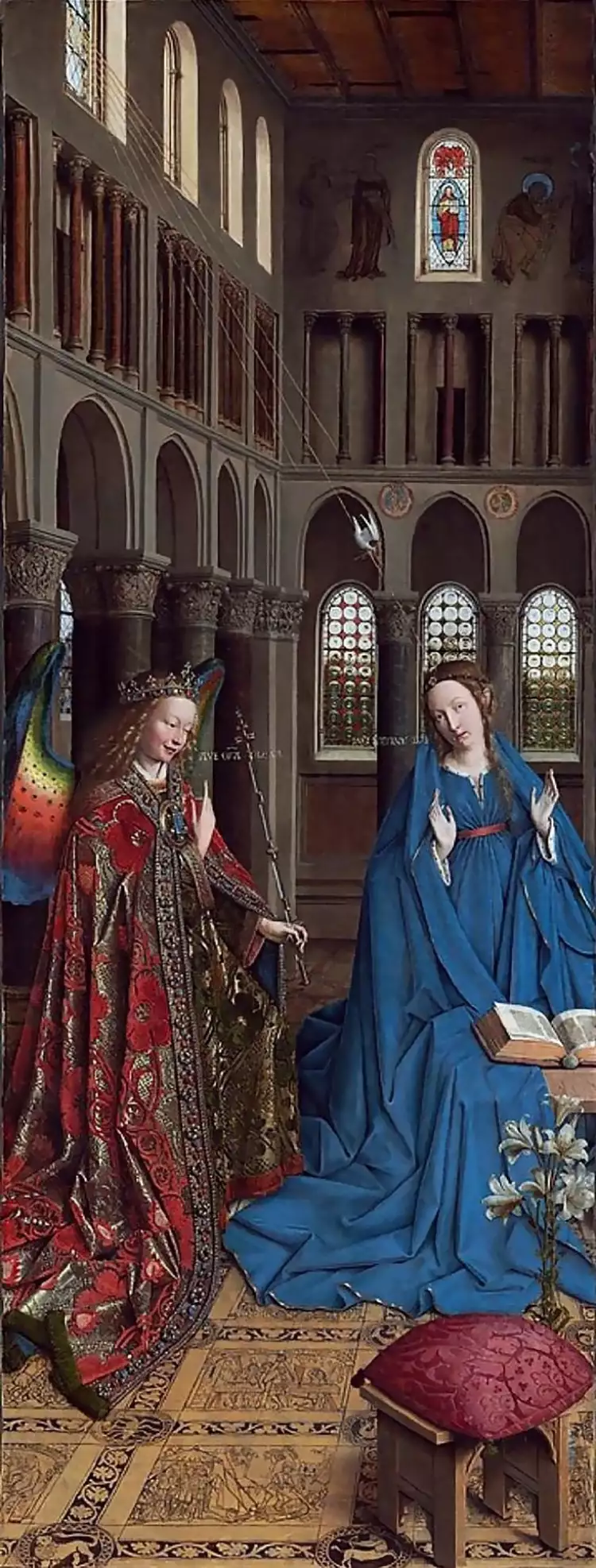 Gothic. Jan van Eyck. Annunciation, 1435
Gothic. Jan van Eyck. Annunciation, 1435
Characteristics of Gothic Style in Painting
Among the characteristic features of Gothic painting are:
- Profound religious themes.
- Representation of the real world through metaphors.
- Linear composition.
- Bright and vivid colors.
- Abundance of actions in a single canvas.
During the early stages of the style, there was no unity of plot in the works of painters – characters interacted more decoratively than naturally. Ornamentation merely emphasized the division of the composition into separate narratives, making the paintings akin to storytelling – the artist encouraged the viewer to examine the elements sequentially, one after another.
Flemish masters achieved incredible heights in creating large paintings that united disparate scenes. Artists unfolded the action against the backdrop of a castle, courtyard, or nature, dividing the plots with elements of landscape or architecture. Thanks to this, the painting is perceived as a unified whole. This form became known as "continuous narrative." One of the most famous examples is Hans Memling's work "Advent and Triumph of Christ," painted in 1480 for the cathedral in Bruges.
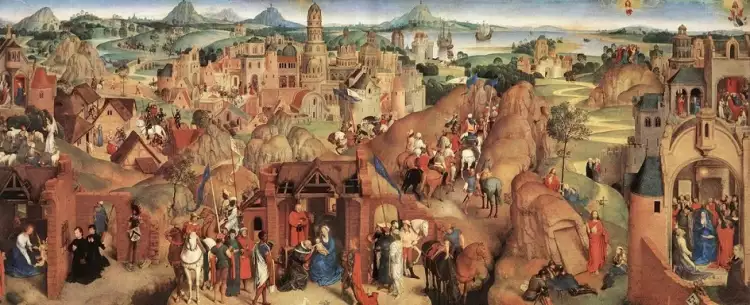 Gothic. Hans Memling. Advent and Triumph of Christ, 1480
Gothic. Hans Memling. Advent and Triumph of Christ, 1480
At the final stage of the style's development, the so-called International Gothic emerged. This direction was characteristic of court painting in the first half of the 15th century, where secular motifs predominated with high detailing of decor and clothing. The first portraits endowed with individuality appeared, which later found vivid reflection in the works of Renaissance masters.
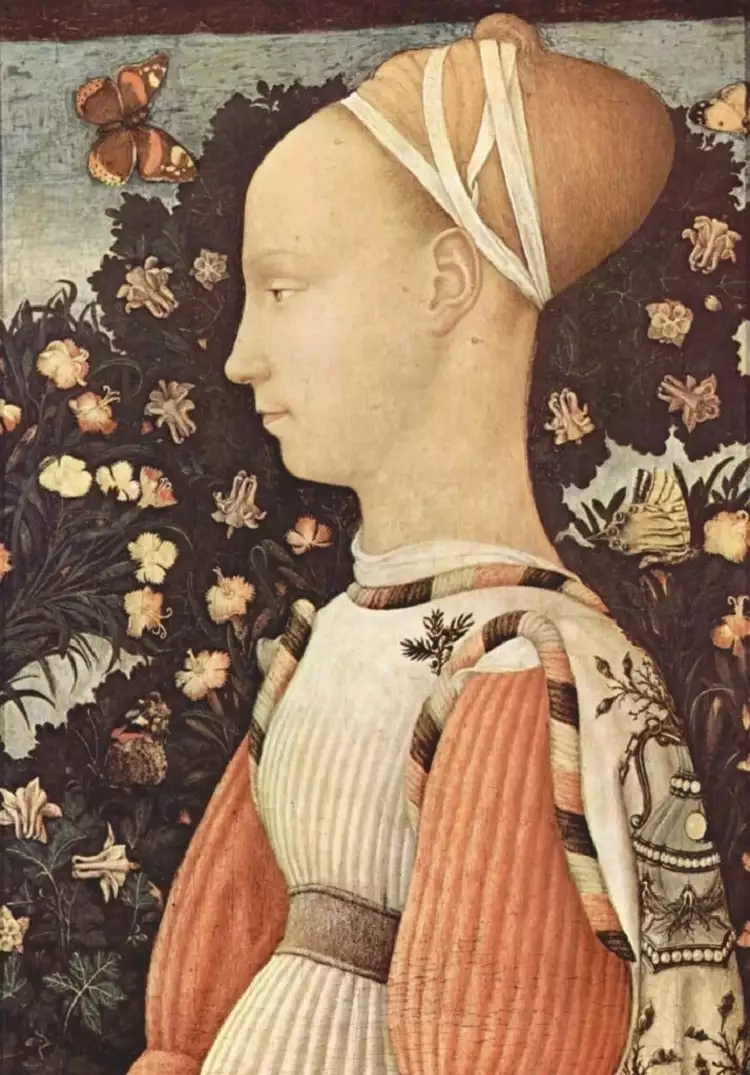 Gothic. Antonio Pisanello. Portrait of a Princess, 1435-1440
Gothic. Antonio Pisanello. Portrait of a Princess, 1435-1440
Numerous antique works, copies of paintings by recognized masters, and works by contemporary artists are presented for sale at the Very Important Lot portal auctions.
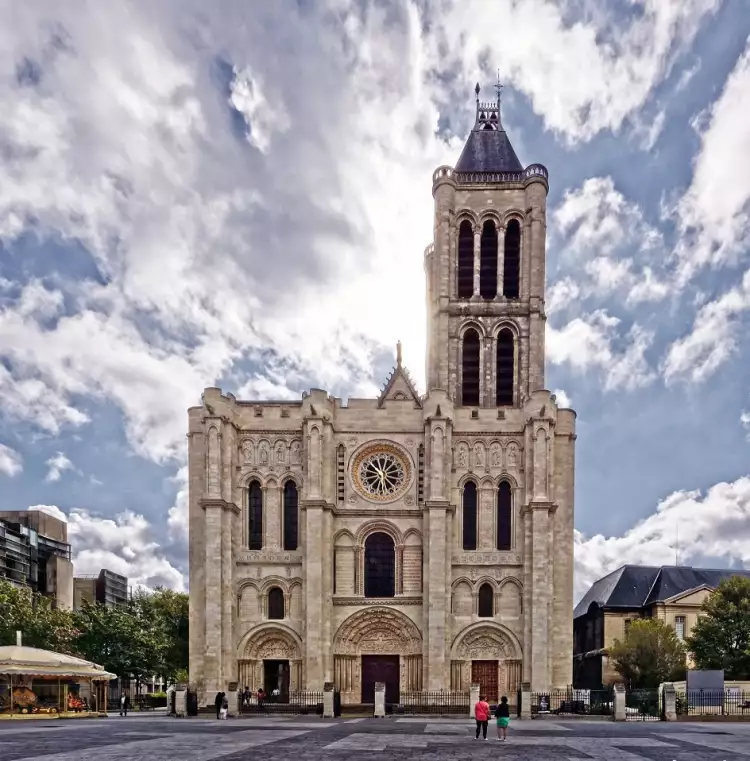
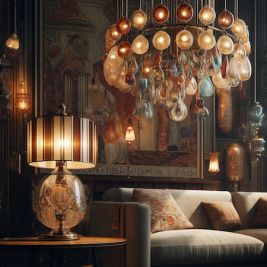 Current Popular Items in the Antique Market
Current Popular Items in the Antique Market 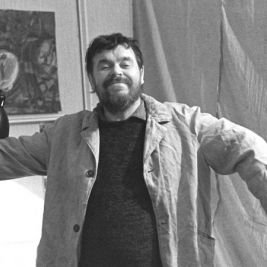 Anatoly Zverev — an unrecognized genius of the Soviet era
Anatoly Zverev — an unrecognized genius of the Soviet era 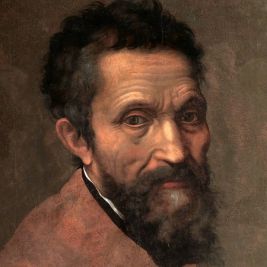 Michelangelo - the greatest sculptor in the world: biography and works of the Italian artis
Michelangelo - the greatest sculptor in the world: biography and works of the Italian artis 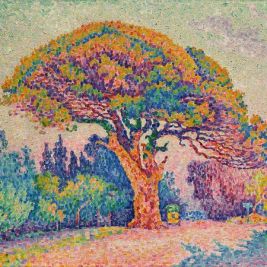 Post-Impressionism is a joyful and unconventional style in painting
Post-Impressionism is a joyful and unconventional style in painting  Glamour in photography is a beautiful genre with elements of elegance and luxury
Glamour in photography is a beautiful genre with elements of elegance and luxury 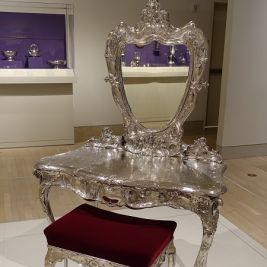 American Silver - From Colonial Times to the Present
American Silver - From Colonial Times to the Present 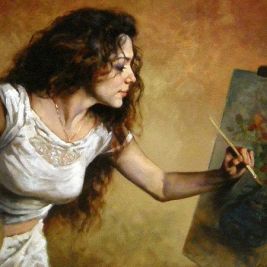 Painting: its types, styles, genres, techniques, and history of origin
Painting: its types, styles, genres, techniques, and history of origin 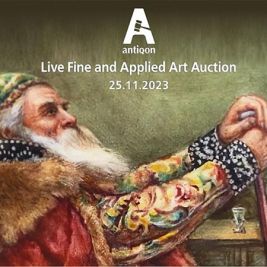 Live Fine and Applied Аrt Auction No.8 of the Antiqon trading platform
Live Fine and Applied Аrt Auction No.8 of the Antiqon trading platform 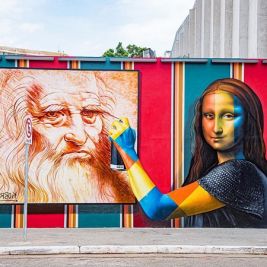 Mural - monumental urban art of immense scale
Mural - monumental urban art of immense scale 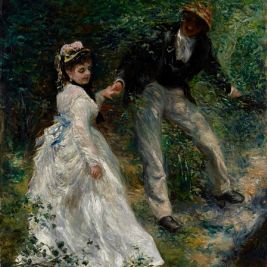 The painting "La Promenade" by Pierre-Auguste Renoir is an example of fleeting happiness
The painting "La Promenade" by Pierre-Auguste Renoir is an example of fleeting happiness